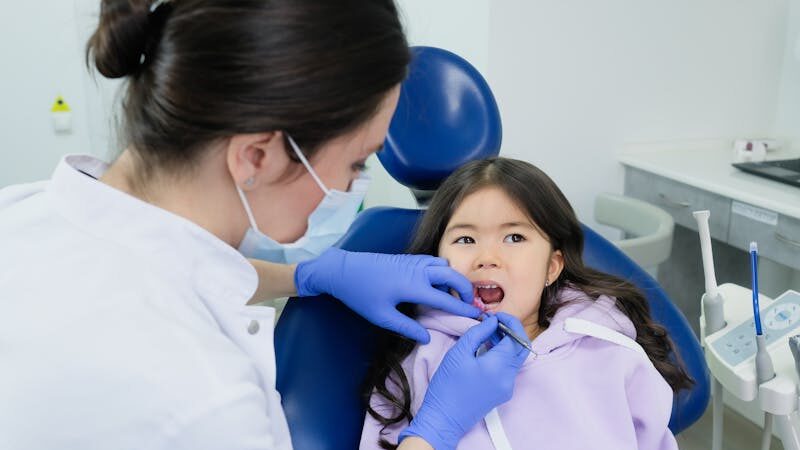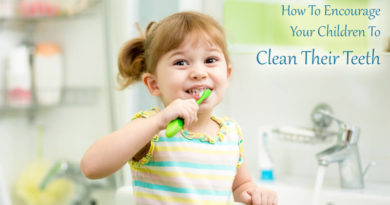What to Expect: Common Dental Treatments for Children Explained
When it comes to pediatric dental care, understanding the common treatments your child might undergo can alleviate much of the anxiety associated with a visit to the dentist. From routine cleanings to more involved procedures like fillings or orthodontics, this article will guide you through what to expect and how each treatment helps maintain your child’s oral health.

What is The Role of Pediatric Dentists?
Pediatric dentists specialize in caring for children’s oral health from infancy through the teen years. They are trained to address conditions and dental issues specific to young people.
Understanding Child Dental Development
Pediatric dentists monitor the growth and development of teeth and jaws in young patients. They ensure that milestones such as the appearance of baby teeth and their replacement by permanent teeth occur smoothly. This early supervision helps prevent future dental issues and supports overall oral health.
Preventive Dental Care
One of the primary roles of pediatric dentists is to provide preventive care, including routine cleanings, fluoride treatments, and sealants. These procedures help protect against decay and other dental problems. By educating children on good dental habits, pediatric dentists also empower them to take charge of their oral health.
Managing Dental Fears and Anxiety
Pediatric dentists are skilled at creating a friendly and welcoming environment for children. They use techniques that ease fears and encourage cooperation during dental visits. This approach not only makes dental care more pleasant but also helps children view dental visits as a positive part of their health routine.
Junior Smiles of Stafford, a leading pediatric dentist in Falls Church, ensures that every child receives top-notch dental care in a welcoming environment. Trust them to provide top-notch dental services that ensure your child’s smile shines bright with health and confidence.
What are Pediatric Dental Treatments?
Navigating the world of pediatric dental treatments can be daunting for parents. This guide demystifies the most common procedures, ensuring you know what to expect when your child sits in the dentist’s chair. Let’s take a closer look at each treatment.
Regular Dental Checkups
Regular dental checkups are crucial from a young age to monitor the development of your child’s teeth and catch issues early. These checkups often involve a simple examination of teeth and gums to assess overall oral health. The dentist may also offer advice on proper brushing techniques and dietary choices to support healthy teeth.
Dental Cleaning
Dental cleaning involves removing plaque and tartar that can build up and lead to cavities or gum disease. This gentle process is performed using specialized tools to clean teeth more thoroughly than regular brushing and flossing at home. It’s usually a pain-free experience for children and can include a fluoride treatment for added protection.
Fluoride Treatments
Fluoride treatments help strengthen the enamel on your child’s teeth, making them more resistant to decay. A dentist applies a fluoride varnish or gel during this quick and painless procedure. Regular fluoride treatments can be a critical preventive measure against tooth decay in children.
Dental X-Rays
Dental X-rays are an essential tool for diagnosing hidden dental issues that cannot be seen during a regular exam. They help the dentist view the teeth and jaw underneath the gums, which is crucial for checking the progress of incoming teeth in children. X-rays are typically recommended annually to monitor dental health comprehensively.
Cavity Fillings
Cavity fillings are a common procedure for treating cavities that occur when dental decay is left unchecked. The process involves removing decayed tooth material, cleaning the affected area, and filling it with a safe, durable material. Fillings help restore the tooth’s shape and function and prevent further decay.
Orthodontic Assessments
Orthodontic assessments determine if your child might benefit from braces or other tooth alignment treatments. These evaluations are essential for planning future orthodontic work, which can improve both the functionality and appearance of your child’s teeth. Early assessment and intervention can lead to better outcomes in dental alignment.
Tips for a Positive Dental Visit
Creating a stress-free dental visit for your child involves preparation and understanding. Here are some key tips to ensure a positive experience at the dentist’s office.
Explain the Process
Before the visit, talk to your child about what to expect in simple, positive terms. Explain the steps of the treatment using child-friendly language. This can help reduce anxiety by making the unknown more familiar.
Play Pretend Dentist
Playing pretend dentists at home can be a fun way to introduce your child to dental procedures. Use a toothbrush to show how the dentist might examine their teeth. This playtime helps children feel more comfortable with the actual instruments and procedures.
Choose the Right Timing
Schedule the appointment at a time when your child is usually well-rested and cooperative. Avoid times close to naps or meal times, as a tired or hungry child may be less cooperative. A well-timed visit can lead to a smoother experience for both child and dentist.
Bring Comfort Items
Allow your child to bring along a favorite toy or blanket to the dentist’s office. This can provide a sense of security and comfort in a new environment. Having a familiar object can greatly ease your child’s anxiety.
Use Positive Reinforcement
Praise your child for good behavior and bravery at the dentist. Consider a small reward after the visit, like a sticker or a little extra playtime. Positive reinforcement encourages good future behavior and associates the dentist visit with a positive outcome.
Conclusion
Understanding the common dental procedures for children can help parents prepare their child for dental visits and ensure that they receive the necessary care for their oral health. Regular visits to the pediatric dentist and following their recommendations are essential in promoting good oral hygiene and preventing dental issues in children.



